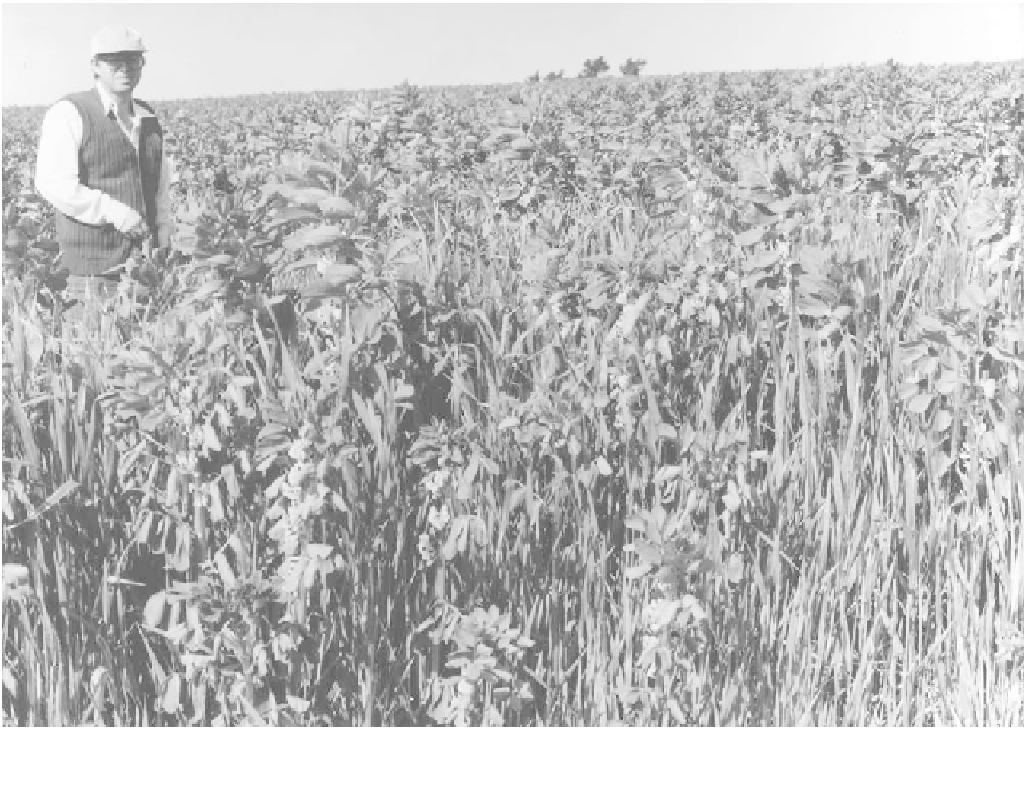Agriculture Reference
In-Depth Information
FIGURE 15.3
Cover crop of bell bean (Vicia faba) and barley (Hordeum vulgare), Watsonville, CA.
This mixed cover crop
inhibits weed growth, and when its biomasss is returned to the soil, it adds organic matter and fixed nitrogen.
the soil along with any residual plant matter. When cover
crops can fulfill these roles in the crop community, there
is less need for human interference and external inputs
(Figure 15.3). Table 15.1 lists many of the benefits of cover
crops along with the interferences (environmental impacts)
that make them possible.
Despite the proven benefit of cover crops in general,
their use must be tailored to the individual agroecosystem.
The farmer needs to know how a cover crop species will
interact with other organisms in the crop system, as well
as how it will impact the conditions of the environment
in which they all live. In addition, it must be remembered
that forms of interference between members of the crop
community, which may be of benefit at one time may be
a liability at another. If resources in the crop system are
limiting, the cover crop can create competitive interfer-
ence. If allowed to become too dense, some cover crop
species may be allelopathic to the crop. Residues or break-
down products of incorporated cover crops may produce
growth-suppressing substances. Damaging herbivores or
disease organisms may find the cover crop species to be
an ideal alternate host, later moving onto the crop. Cover
crop residue may also interfere with cultivation, weeding,
harvesting, or other farming activities.
The case study
Cover cropping with Rye and Bell-
beans
describes a study that demonstrates the ability of
cover crops, especially those that are made up of mixed
species, to control weeds and increase the yield of the
subsequent main crop.
B
ENEFICIAL
I
NTERFERENCES
OF
W
EEDS
Weeds in cropping systems are most often considered to
be detrimental, competing with the crop species and
thereby reducing yields. Although weeds do often have
negative effects on crops, it has been clearly shown that
in many circumstances, weeds and other noncrop plants
may benefit the crop community through their reactions
on the environment (Radosevich et al., 1997; Chacón and
Gliessman, 1982). Weeds exert their beneficial influences
in much the same way as cover crops and often fill the
same ecological roles; with proper management based on
an understanding of the mechanisms of weeds' interac-
tions, farmers can take advantage of their positive effects.

Search WWH ::

Custom Search